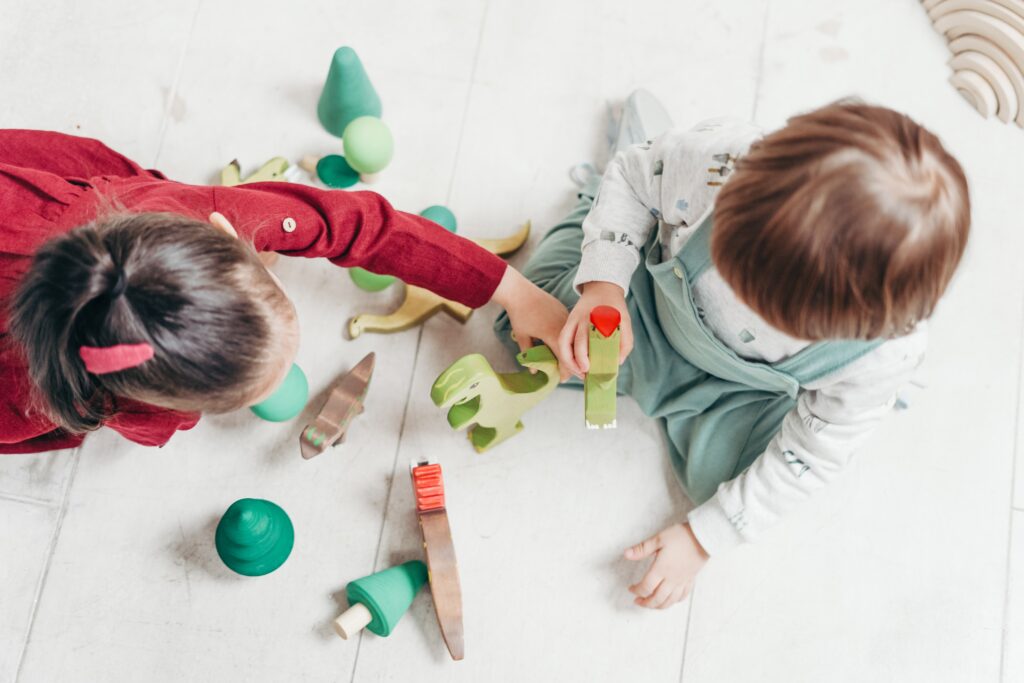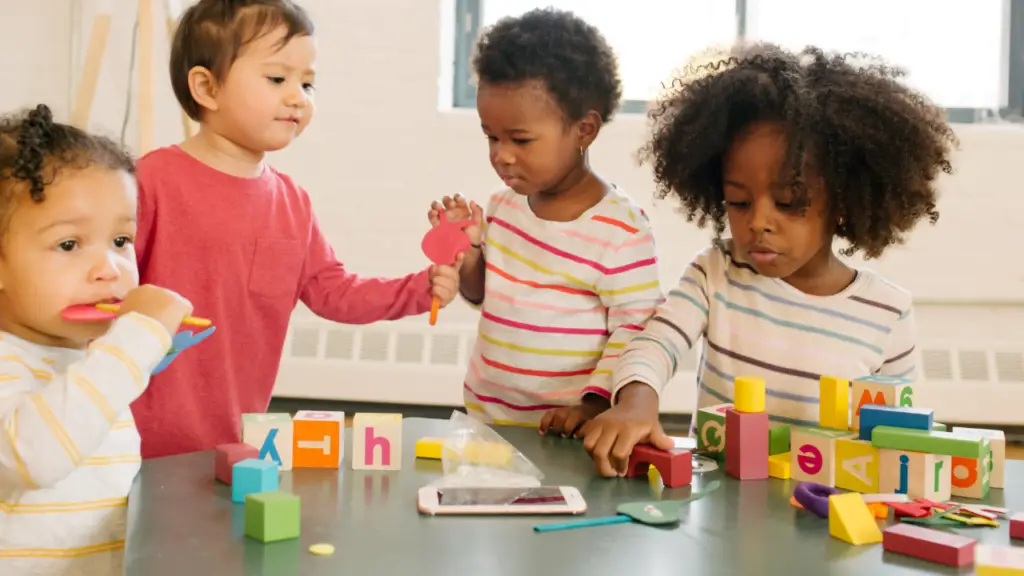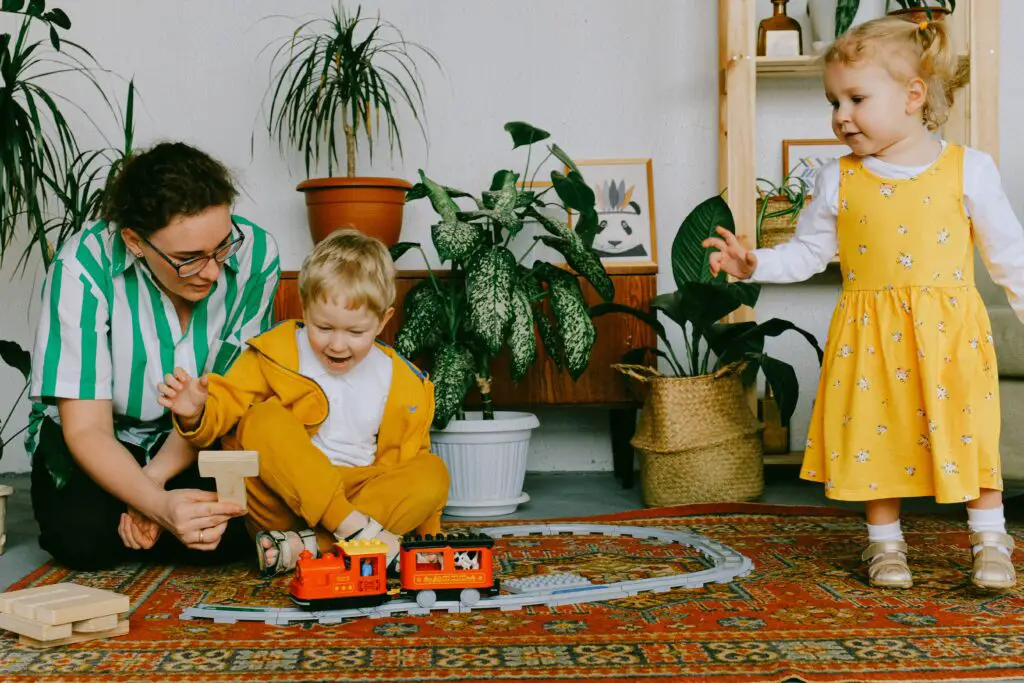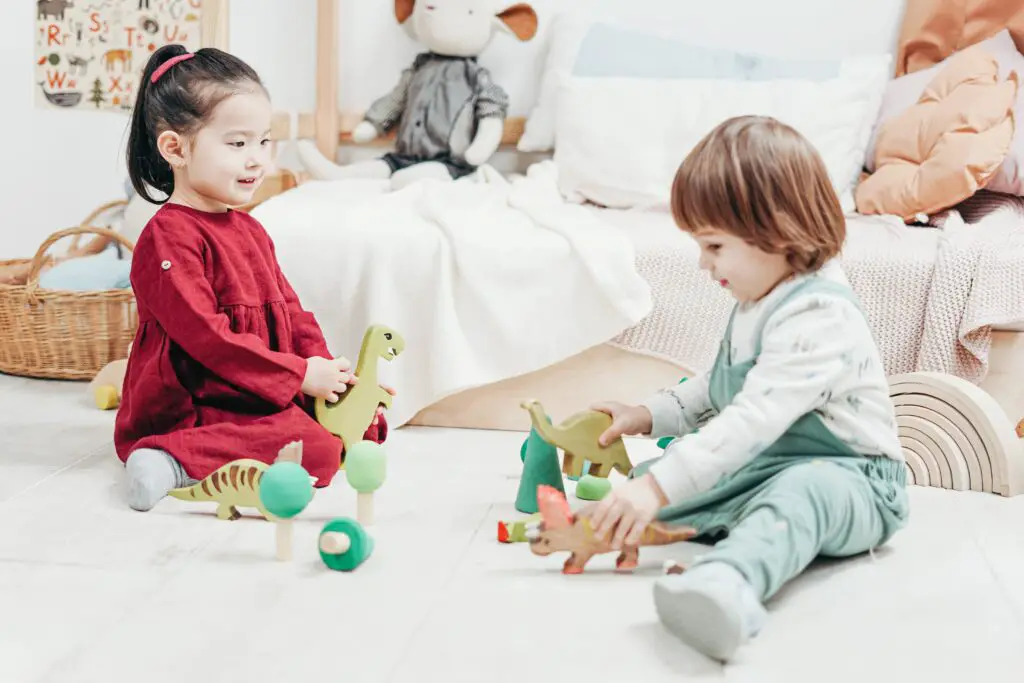When toddlers fight over a toy, it’s a scene every parent is familiar with.
The high-pitched wails, the tug-of-war over that one particular toy, and the inevitable question: ‘Why can’t they just share?‘
Dive into the world of toddler dynamics and discover not only why these little battles happen but also how parents can navigate these stormy toy disputes with grace and understanding.

Some of the links in this post are affiliate links. This means if you click on the link and purchase the item, I will receive an affiliate commision at no extra cost to you. All opinions remain my own. Read more on our Privacy Policy Page
Why Do Toddlers Fight Over a Toy?
A Universe of Endless Discovery
Imagine a realm where every hue, sound, and texture is a revelation. For toddlers, every day is an unfolding adventure, teeming with new experiences.
The Profound Role of Toys
To a toddler, a toy isn’t merely an object. It’s a magical tool that unlocks worlds of creativity and learning. Whether it’s a bouncing ball or a teddy bear, it’s their ticket to exploration.
Beyond Possession: The Emotional Landscape
When toddlers fight over a toy, it’s not about ownership. It’s about diving into the stories, experiments, and adventures that toy represents. And in their eyes, that toy embodies a universe of potential.
Raw Emotions and Vivid Imaginations
Their joys, sorrows, and frustrations are intense, making reactions to situations like toy tussles seem overwhelmingly profound. Understanding this helps adults approach such moments with greater compassion.
Water Doodle Mat – Kids Painting Writing

By recognizing the depth of a toddler’s view, caregivers can navigate challenges with increased empathy, remembering that, in their young eyes, the stakes are high and every toy holds a world of wonder.

>>> SIBLING BONDING GAMES AND ACTIVITIES
Behind the Scenes: What the Fights Tell Us – When Toddlers Fight Over a Toy
An Expression Beyond Possession
On the surface, it looks like a mere tussle over a toy. But delve deeper, and you’ll realize it’s a canvas painted with emotions, desires, and budding self-awareness. These little ones aren’t just vying for a plaything; they’re making statements, testing boundaries, and exploring relationships.
Exploring Their Newfound Autonomy
Every grab, every shout is a proclamation of their autonomy. “I am here! I exist!” they seem to say. As toddlers begin to understand their individuality, they grapple with the complex concept of ownership — both of objects and of their personal space.
The Beginning of Social Understanding
As they navigate these toy battles, toddlers are also embarking on their first social expeditions. They’re piecing together the complex jigsaw puzzle of human interaction: when to lead, when to follow, when to assert, and when to acquiesce.
The Intricacies of Cognitive Play
Beyond the emotional and social underpinnings, there’s a cognitive whirlwind happening. Each confrontation is a live experiment in cause and effect. “What happens if I pull harder? What if I shout louder? What if I trade?” These aren’t mere fights; they’re active problem-solving sessions.
Toddler Climbing Toys Indoor & Outdoor

Emotional Resonance and Empathy
Even in the heat of the battle, the seeds of empathy are being sown. Through the ups and downs of these conflicts, toddlers are getting a taste of various emotions — jealousy, frustration, joy, and relief. By walking a mile in their playmate’s shoes, they’re laying the groundwork for understanding and empathizing with others’ feelings.
In sum, when we see toddlers clashing over a toy, it’s tempting to dismiss it as childish whimsy. But in reality, these seemingly mundane moments are windows into their rapidly developing minds. By decoding what lies behind these skirmishes, we’re better equipped to guide, support, and nurture them as they take on the world.

What Can We Do? Simple Tips For Parent When Toddlers Fight Over a Toy
Tips for parents to help calm toddlers during toy conflicts – When Toddlers Fight Over a Toy :
- Stay Calm: Your demeanor sets the tone. Approach the situation calmly, and your toddler is more likely to follow suit.
- Distraction: Introduce another toy or activity to divert their attention from the current conflict.
- Use Simple Words: Explain the situation in clear, easy-to-understand terms like “It’s Sarah’s turn now, then it’s yours.”
- Physical Separation: Gently move the toddlers apart, giving them a moment to cool down.
- Model Sharing: Demonstrate the act of sharing, emphasizing the joy it brings.
- Timed Turns: Set a timer or use a sandglass to ensure each child gets a fair turn with the toy.
- Empathy Training: Ask questions like, “How would you feel if…?” to teach them to understand each other’s feelings.
- Reinforce Good Behavior: Praise and reward moments when they share or play well together.
- Stay Consistent: Ensure the rules for sharing and behavior are consistent to avoid confusion.
- Group Play Activities: Introduce games that require teamwork, emphasizing collective fun over individual possession.
Remember, each toddler is unique, so it may take a bit of trial and error to find the strategy that works best for your child.
>>> SIBLING BONDING GAMES AND ACTIVITIES
Embrace the Moment, Not the Mayhem
It’s easy to focus on the chaos erupting in front of you, but try to see beyond the immediate scuffle. Remember, this is an opportunity. By approaching these moments with patience and understanding, you’re nurturing your child’s development and teaching valuable life lessons.
Equip Them with Words
Sometimes, the root of a fight is a simple inability to communicate. Engage with your toddler by teaching them words or simple phrases that can help express their feelings. “I’m upset” or “It’s my turn” can go a long way.
Distraction: The Art of Redirection
While it’s not a long-term solution, in the heat of the moment, distraction can be your best friend. Introducing a new toy, changing the environment, or suggesting a different activity can break the tension and offer a quick respite.
Set Clear Boundaries
Children, especially toddlers, thrive on consistency. By setting and enforcing clear boundaries about sharing and turn-taking, you’re providing a stable environment where they can learn and grow. Consistency reinforces understanding and offers a sense of security.
Encourage Group Play
Introduce games or activities that require collaboration. This not only makes sharing a necessity but also highlights the joys of teamwork and collective achievement. Over time, they’ll start to appreciate the value of playing together rather than against each other.
Model the Behavior
Toddlers are expert mimics. If they see you sharing, taking turns, and handling conflicts with grace, they’re more likely to mirror those behaviors. Your actions often speak louder than your words.
TOOKYLAND 3 in 1 Toddler Rainbow Climbing Toys Indoor

As bewildering as these toy conflicts can seem, they’re an integral part of your toddler’s journey towards becoming a social, empathetic, and understanding individual. Embracing these skirmishes as growth opportunities, while armed with the right tools and approaches, can make this phase both rewarding and transformative for both parent and child.

Conclusion – Toddlers Fight Over a Toy
When toddlers fight over a toy, it’s like watching a mini-drama unfold. As parents, our instinct might be to dive in and resolve the conflict swiftly.
But taking a step back, we realize that these little battles are more than just about possession.
They’re rites of passage, tiny milestones marking their journey of growth, understanding, and social development.
So the next time the air gets charged with tension over a toy, remember: it’s not just about the present moment.
It’s about the bigger picture, the lifelong skills and lessons being cultivated. Embrace the challenge, armed with knowledge and empathy, and watch your toddler blossom.
references: Toddlers and Challenging Behavior: Why They Do It and How to Respond(https://www.zerotothree.org/resource/toddlers-and-challenging-behavior-why-they-do-it-and-how-to-respond/), Managing Your Toddler’s Tantrums ( https://www.psychologytoday.com/au/blog/peaceful-parents-happy-kids/202110/managing-your-toddlers-tantrums)






